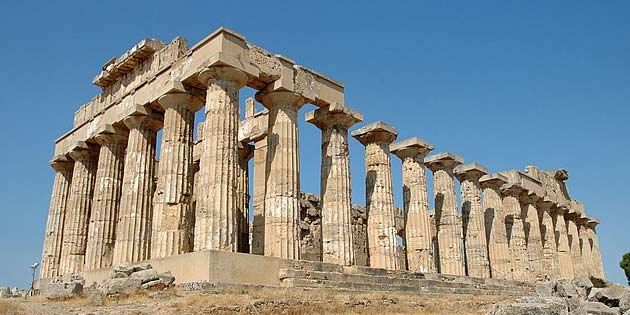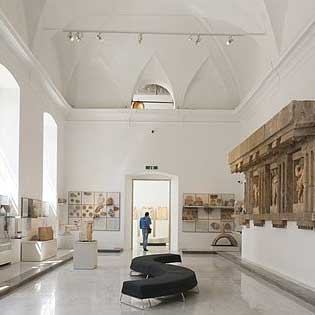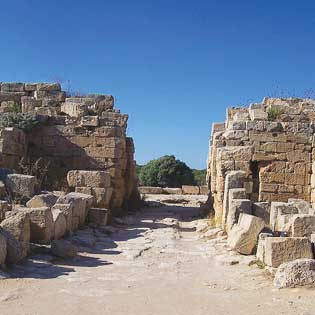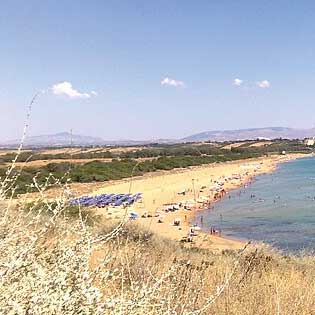Sacred complex of the eastern hill of Selinunte
The sacred complex of the Eastern Hill of the Selinunte Archaeological Park consists of three temples and has very strong similarities with the western slopes of the Caria acropolis of Megara Nisea, motherland of Selinunte.
The Temple E dates back to 460-450 BC and has a very similar plan to that of Temples A and O of the Acropolis of Selinunte. Its current appearance is due to anastylosis, that is to the recomposition and re-raising of some of its columns, carried out between 1956 and 1959.
The temple has a peristyle of 6 x 15 columns with numerous surviving traces of the original stucco that covered them. It is a temple characterized by several stairways that determine a system of successive elevations.
The Doric frieze at the top of the cell walls was made up of figured metopes, whose characters they had the body in local sandstone while the head and the naked parts of the female bodies were in Parian marble. Four complete metopes have been preserved depicting: Heracles killing the Amazon Antiope; the marriage of Zeus to Hera; Actaeon being torn apart by the dogs of Artemis; Athena killing the giant Encèlado; all preserved in the Antonio Salinas Archaeological Museum in Palermo.
Temple E is believed to be dedicated to Hera, following the discovery of an inscription on a votive stele, although some scholars maintain that instead it is a temple dedicated to Aphrodite.
The Temple F is the oldest but also the smallest of the three temples on the eastern hill of the Selinunte Archaeological Park. It was built between 550 and 540 BC. based on the model of Temple C of the acropolis. It has a peristyle of 6 x 14 columns characterized by masonry closures between the intercolumns, with fake painted doors composed of pilasters and architraves, probably made to protect the votive gifts or to prevent the layman from viewing rites details. The interior is characterized by a vestibule delimited by a second order of columns, the pronaos, the cella and the adyton connected in a long and narrow whole.
two late archaic metopes representing Athena have been found. and Dionysus in the act of killing two Giants, now preserved in the Regional Archaeological Museum of Palermo.
Temple F was perhaps dedicated to Athena or perhaps to Diòniso.
The Temple G is the largest in Selinunte and one of the largest in the Greek world. Its construction, although it lasted from 530 to 409 BC, nevertheless remained unfinished, as evidenced by the absence of grooves in some columns, and by the existence of column drums of the same size still being extracted , in the Cusa Quarries. Among the heap of its ruins, we recognize a peristyle of 8 x 17 columns of which only one column remains standing, locally called "lu fusu di la vecchia," the spindle of the old woman ". The interior of the temple was composed of: a 4-column prostyle pronaos with two deep doors ending in a pillar and three access doors to the large cell; a very large cell divided into three naves characterized by two rows of 10 columns thinner that supported a second row of columns, and two side stairs leading to the attics; from the adyton, placed at the end of the central nave, inside which was found the torso of a wounded or dying giant and the very important inscription called Grande Tavola Selinuntina which contains a real catalog of the cults practiced in Selinunte, now preserved in the Antonio Salinas Archaeological Museum in Palermo; and finally by an opisthodomus in antis not communicating with the cell.
Among the ruins, particularly interest ri sultan: some finished columns showing traces of colored stucco; the blocks of the entablatures which have horseshoe-shaped lateral grooves through which the ropes for their lifting were passed.
Temple G, from the inscription found, it seems that it was dedicated to Apollo, but recent studies would attribute it to Zeus.



